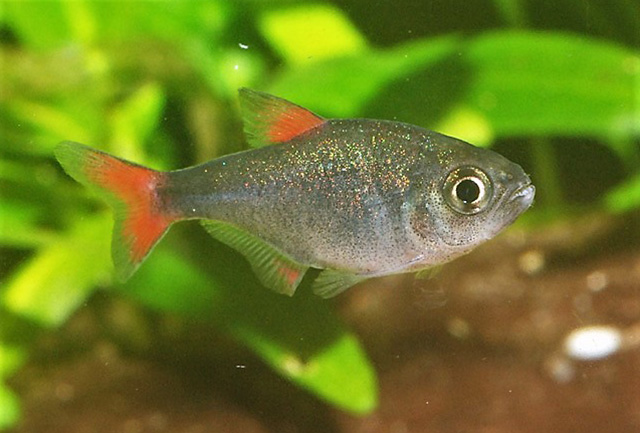| Characidae (Characins; tetras), subfamily: Stethaprioninae |
| 2.47 cm (male/unsexed) |
|
pelagic; freshwater |
| South America: Brazil. |
|
Vertebrae: 32-34. Diagnosis: Hyphessobrycon eilyos is distinguished from its congeners by the absence of humeral and caudal spots; by the presence of numerous dark chromatophores on the lateral surface of the body, with the chromatophores intensely concentrated on the ventral region from the pelvic-fin origin to the end of the caudal-fin base; dorsal, adipose, and caudal fins with carmine red pigmentation in life; the presence of 7-11 maxillary teeth; 6 or 7 horizontal scale rows between the dorsal fin origin and the lateral line; and 15 to 19 branched anal-fin rays. Detailed comparisons between H. eilyos and congeners sharing a general dark color pattern are presented in the "Discussion" (Ref. 52338). |
|
|
Near Threatened (NT); Date assessed: 07 November 2018 (B1b(iii)) Ref. (130435)
|
| harmless |
Source and more info: www.fishbase.org. For personal, classroom, and other internal use only. Not for publication.
